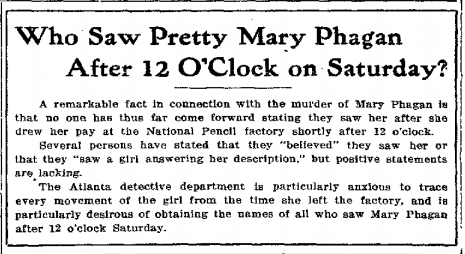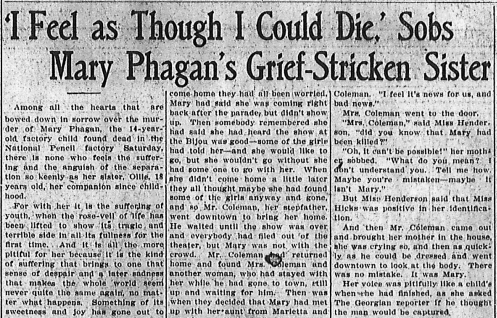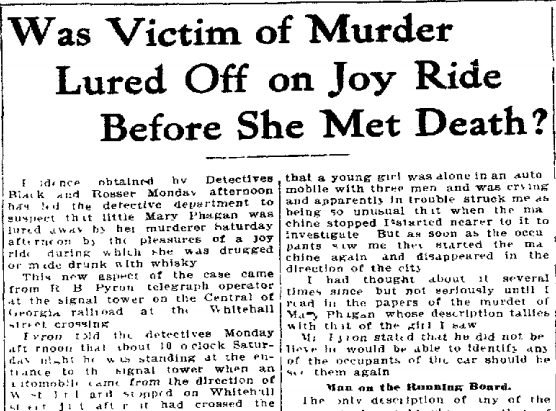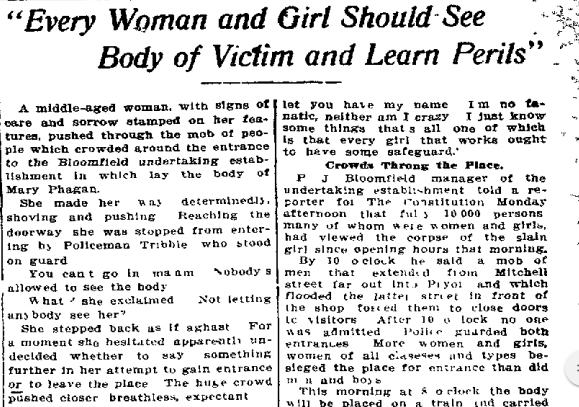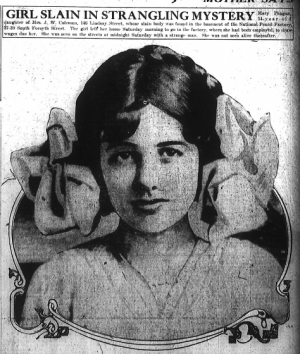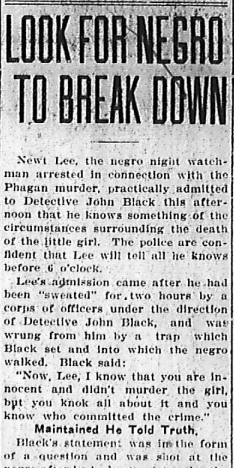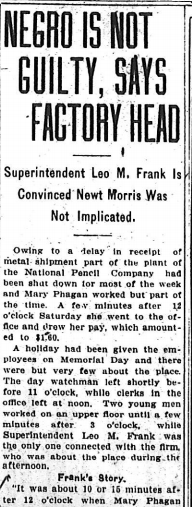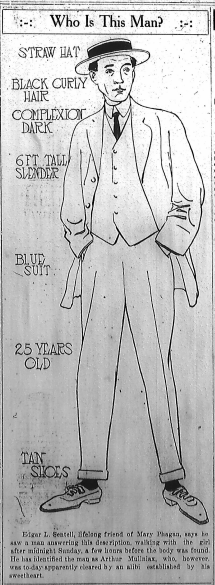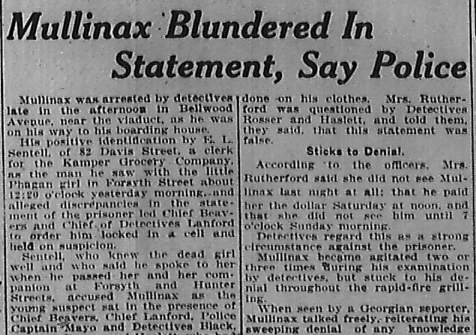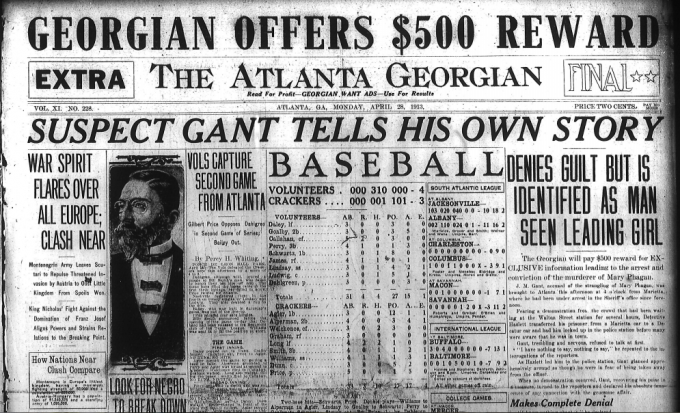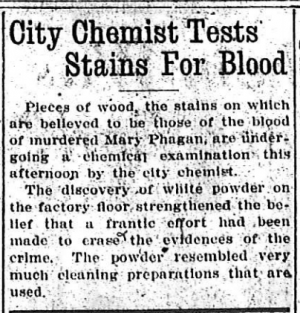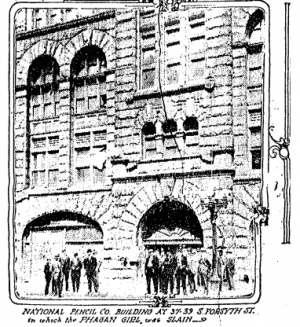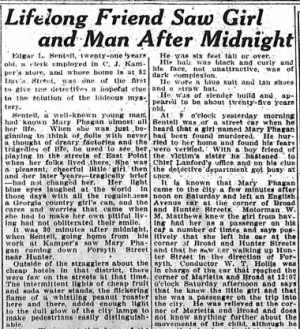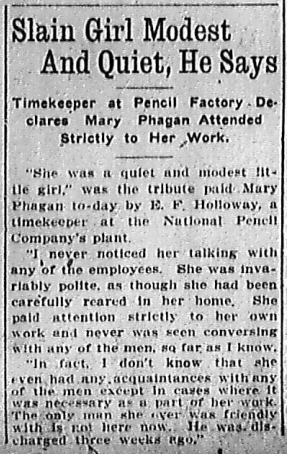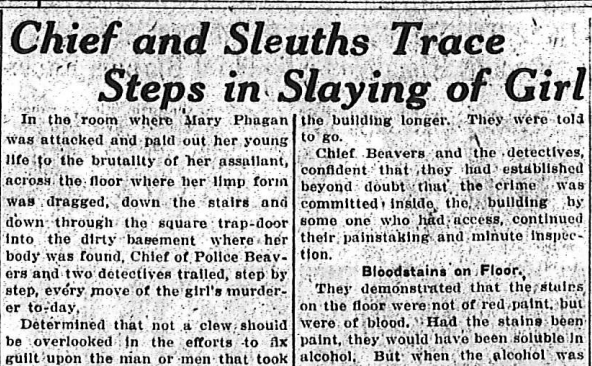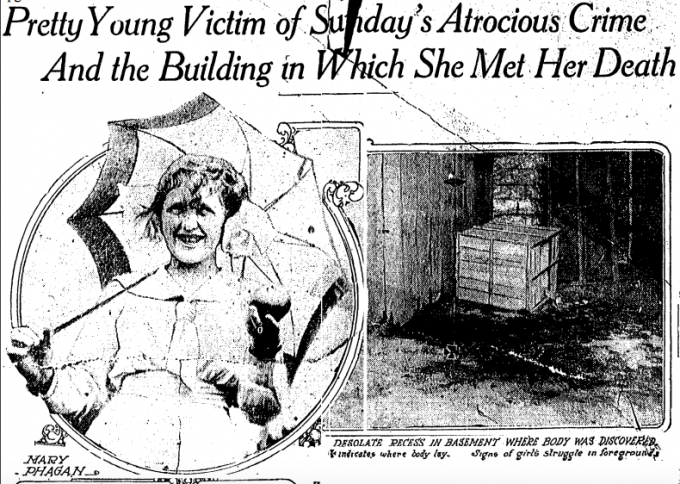Another in our series of new transcriptions of contemporary articles on the Leo Frank case.
Atlanta Constitution
Tuesday, April 29th, 1913
A remarkable fact in connection with the murder of Mary Phagan is that no one has thus far come forward stating they saw her after she drew her pay at the National Pencil factory shortly after 12 o’clock.
Several persons have stated that they “believed” they saw her or that they “saw a girl answering her description,” but positive statements are lacking.
The Atlanta detective department is particularly anxious to trace every movement of the girl from the time she left the factory, and is particularly desirous of obtaining the names of all who saw Mary Phagan after 12 o’clock Saturday.
* * *
Atlanta Constitution, April 29th 1913, “Who Saw Pretty Mary Phagan After 12 O’Clock on Saturday?” Leo Frank case newspaper article series (Original PDF)

